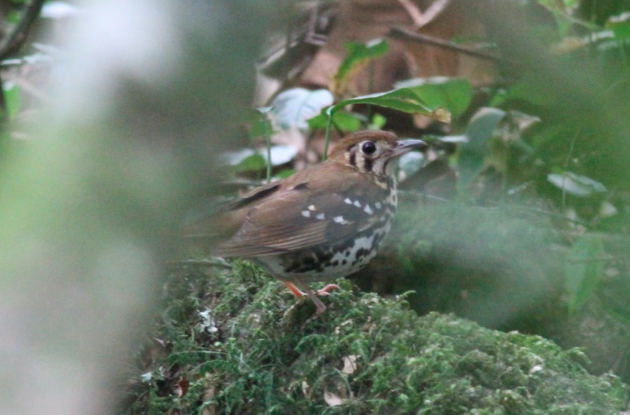A team of field researchers took a five-week expedition in search of the spotted ground thrush in Malawi, a species last spotted in Malawi in 2005.

The spotted ground thrush is widely distributed, but little is known about the bird due to its elusive nature. There are estimated to be less than 2 500 individuals remaining. Several subspecies of the bird are recorded but belcheri is the only one recorded in Malawi.
The thrush tends to favour the moist, evergreen forests of Malawi. After major deforestation at Soco and Thyolo Mountain, Mount Mulanje in Malawi might be the species’ final stronghold, where its presence was first confirmed in 1983.
As far back as 1989, scientists warned that the species could be moving towards extinction when not more than 40 pairs were thought to exist. The expedition team conducted field surveys in three locations, Ruo Gorge, Chisongeli and Thyolo, focusing on the species distribution, population size and habitat.

The spotted ground thrush is sensitive to habitat disturbance and is currently listed as endangered on the IUCN red list of endangered species. The expedition sought to investigate the subspecies status, which might be regionally extinct after intense pressure on the habitat of Mount Mulanje, which has lost 15% of its habitat in the past 10 years.
The researchers used a combination of methods in their search, including on-the-ground surveys, acoustic monitoring and camera traps. The team spent five weeks searching the forest in the early morning and just before dark, with the thrush being one of the first birds to be active in the morning, and singing again late in the day.

Acoustic monitoring was one of the methods used to track a spotted ground thrush
After more than three weeks of searching, they finally spotted a spotted ground thrush fly from the undergrowth in the Chisongeli forest. The team shifted their efforts to a 1 300 hectares protected reserve that remains the largest intact block of Afromontane forest in Malawi.
After several days of exploring the steep slopes of Chisongeli forest, two thrushes were spotted flying back and forth from a nest in a native toad tree.
Even though the expedition resulted in the first sighting of a spotted ground thrush in 15 years, only one breeding pair was found. It seems as though the species have gone locally extinct in Ruo Gorge, and might be leading towards extinction in Chisongeli. Hopefully, the results of the expedition shed some light on the precarity of the subspecies, and strengthen conservation efforts to protect Mount Mulanje’s biodiversity.
In the research report published by the Biodiversity Inventory for Conservation (BINCO), they argue that the protection of Chisongeli is of utmost priority for the survival of the spotted ground thrush.

The Chisongeli Forest
BINCO is working with local conservation partners, WeForest and Mount Mulanje Conservation trust, as well as composing a letter for African Parks, who will be involved in the protection of the region.
Malawi has recently been abuzz with the sightings of rare species, with the rare Chapman’s pygmy chameleon spotted for the first time in decades, and conservation work underway around Mount Mulanje to save their endangered cycad species. The protection of Mount Mulanje’s ecosystem seems more pertinent than before, and BINCO will be lobbying to have the spotted ground thrush move up on the IUCN red list from endangered to critically endangered.
For more information about the project and the conservation work of BINCO, visit them here.
Pictures: Ruben Foquet/BINCO
ALSO READ














